Ultimate Guide to Flex PCB Manufacturing for Innovative Solutions
In today's rapidly evolving electronics landscape, the demand for innovative solutions has led to a significant increase in the use of flex PCB manufacturing.
 Flexible printed circuit boards have revolutionized the way we design and implement electronic devices, offering unparalleled adaptability and efficiency. This ultimate guide aims to equip you with the knowledge and insights necessary to navigate the complexities of flex PCB manufacturing.
Flexible printed circuit boards have revolutionized the way we design and implement electronic devices, offering unparalleled adaptability and efficiency. This ultimate guide aims to equip you with the knowledge and insights necessary to navigate the complexities of flex PCB manufacturing.
Whether you are an engineer looking to optimize your designs or a business leader aiming to enhance product performance, understanding the intricacies of this manufacturing process is crucial. From material selection to production techniques, we will explore every facet of flexible PCB design, ensuring that you are well-prepared to leverage this technology for your next cutting-edge project.
Join us on this journey as we uncover the key strategies and best practices for successful flex PCB manufacturing that can drive innovation and elevate your products to new heights.
Challenges in Flex PCB Manufacturing: An In-Depth Analysis
The manufacturing of flexible printed circuits (PCBs) presents unique challenges that require careful consideration and innovative solutions. One significant challenge is the complexity of materials used in the production process. Flexible PCBs often need to be made from specialized substrates that maintain durability while offering flexibility. This necessitates advanced material science to develop compounds that can withstand rigorous mechanical and thermal stresses without compromising performance.
Another critical issue in flex PCB manufacturing is ensuring precise alignment and layer registration during the fabrication process. The intricate designs of flexible circuits demand that manufacturers maintain tight tolerances to avoid issues related to signal integrity and mechanical failure. Additionally, as the demand for smaller, lighter, and more complex electronic devices increases, manufacturers face pressures to innovate rapidly while managing production costs and lead times.
Amidst these challenges, the industry is witnessing a surge in the adoption of roll-to-roll (R2R) technologies, which promise to streamline the fabrication of flexible devices. This method not only improves efficiency but also reduces production waste, making it an attractive option for manufacturers looking to improve both their environmental footprint and bottom line. As the global printed circuit board market continues to expand, addressing these manufacturing challenges will be crucial for companies aiming to remain competitive in a dynamic landscape.
Key Industry Statistics on Flex PCB Failure Rates and Reliability Issues
The reliability of flexible printed circuits (flex PCBs) in electronic applications remains a crucial factor as industries rapidly evolve. Recent key statistics reveal that while flex PCBs offer innovative solutions, they also encounter specific failure rates that warrant attention. Understanding the common reliability issues associated with flex PCBs is essential for manufacturers and designers, as these challenges can significantly impact performance and longevity. For example, factors such as material fatigue, environmental stress, and manufacturing inconsistencies can lead to premature failures, necessitating rigorous testing and quality assurance protocols.
In the context of the growing markets, the rigid flex PCB sector is projected to experience robust growth, with an estimated CAGR of 12.4% in China. This growth underscores the importance of addressing failure rates and enhancing reliability to meet increasing demand. As the market expands, so does the pressure on manufacturers to innovate while ensuring that reliability issues are minimized. To navigate this complex landscape, stakeholders must prioritize research and development, focusing on advanced materials and manufacturing techniques that bolster the performance and durability of flex PCBs.
Comparative Study: Flex PCBs vs. Rigid PCBs in Performance and Cost
When it comes to choosing between flexible printed circuits (Flex PCBs) and rigid printed circuits (Rigid PCBs), performance and cost are crucial factors that cannot be overlooked. Flex PCBs offer the advantage of design versatility, allowing for configurations that can bend and twist to fit complex shapes in modern devices. This makes them ideal for applications in the automotive, consumer electronics, and medical devices sectors, where space and weight constraints are paramount.
However, this flexibility often comes at a higher manufacturing cost compared to traditional Rigid PCBs. Rigid PCBs are generally cheaper to produce and can be more than sufficient for applications where physical stress is not a concern. Therefore, it's essential to analyze the specific requirements of your project—if your design demands high-density interconnections in a confined space, a Flex PCB may justify the additional cost due to its performance capabilities.
**Tips:**
1. Always prototype both types of PCBs to assess their performance in real-world applications. This can provide valuable insights that go beyond theoretical calculations.
2. Consider the long-term cost implications, including reliability and maintenance, as a higher initial investment in Flex PCBs may lead to lower overall costs through reduced failures and greater durability.
Ultimate Guide to Flex PCB Manufacturing for Innovative Solutions - Comparative Study: Flex PCBs vs. Rigid PCBs in Performance and Cost
| Parameter | Flex PCBs | Rigid PCBs |
|---|---|---|
| Cost per unit (estimated) | $2.50 | $1.50 |
| Typical thickness | 0.1 mm - 0.5 mm | 0.4 mm - 3.2 mm |
| Weight | Lightweight (varies) | Heavier (depending on dimensions) |
| Flexibility | High | Low |
| Thermal performance | Good | Excellent |
| Circuit density | High | Medium |
| Lead time for production | Short | Medium |
| Applications | Wearable electronics, smartphones | Home appliances, computers |
Emerging Technologies Addressing Common Flex PCB Problems
Flex PCBs, or flexible printed circuit boards, have become crucial in modern electronics, especially as the demand for compact and lightweight designs increases. However, several challenges hinder their widespread adoption, including issues related to reliability, manufacturing complexities, and performance under varying environmental conditions. According to a recent report by Research and Markets, the global flexible printed circuit boards market is projected to grow at a CAGR of 14.8% from 2021 to 2026, highlighting the urgent need for innovative solutions to address these common problems.
Emerging technologies are playing a pivotal role in resolving these challenges. For instance, advancements in material science are leading to the development of more robust substrates that enhance the thermal and mechanical stability of flex PCBs. A study published in the IEEE Transactions on Components, Packaging and Manufacturing Technology emphasizes that the introduction of improved polyimide films can significantly reduce failure rates associated with thermal cycling. Additionally, automation and advanced manufacturing techniques, such as additive manufacturing and precision laser cutting, are streamlining production processes, thus minimizing defects and enhancing yield rates.
Furthermore, the integration of smart technologies, including IoT and machine learning algorithms, into the manufacturing process provides real-time monitoring and predictive analytics. This allows manufacturers to identify and mitigate issues before they escalate, ultimately improving the reliability of flex PCBs. As these technologies continue to evolve, they promise to solve existing challenges and unlock new opportunities for flex PCB applications across various industries, from automotive to consumer electronics.

Future Trends in Flex PCB Manufacturing and Their Impact on Innovation
As the field of electronics continues to expand, flexibility in printed circuit boards (PCBs) is becoming increasingly crucial for innovation. Future trends in flex PCB manufacturing point toward enhanced capabilities driven by advancements in materials and production techniques. The integration of smart materials and eco-friendly processes will not only increase product functionality but also mitigate environmental impact, paving the way for sustainable innovation in various applications, from healthcare devices to consumer electronics.

Tips: When considering flex PCB manufacturing, it is important to select the right substrate material for your specific application. Look for options that offer high thermal stability and excellent flexibility. Additionally, collaborating closely with manufacturers during the design phase can lead to improved efficiency and cost savings by minimizing design revisions later on.
Moreover, the rise of automation and artificial intelligence in manufacturing processes is set to streamline production and reduce lead times. By leveraging these technologies, companies can remain agile and adapt quickly to changing market demands.
Tips: Invest in design software that supports simulation and modeling to test and refine your designs before production. This proactive approach can help identify potential issues early in the process, leading to higher quality and more reliable end products.
Related Posts
-
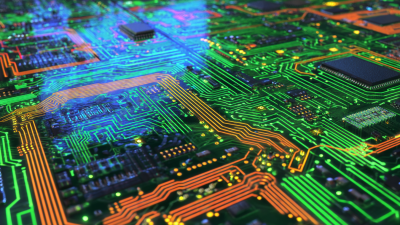
Ultimate Checklist for Selecting the Best PCB Fabrication Services Worldwide
-
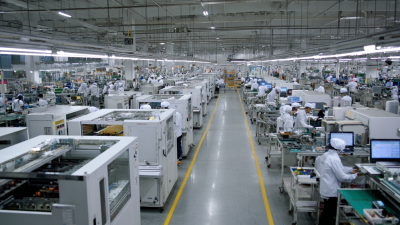
Unleashing the Power of Chinese Manufacturing in the Best PCB Production
-
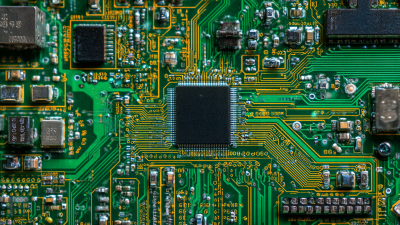
The Ultimate Guide to PCB Fabrication: Navigating the 2023 Industry Landscape and Beyond
-
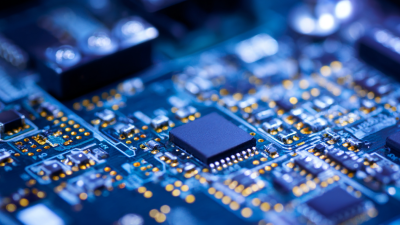
Essential Tips for Identifying Top-Quality PCB Assembly Manufacturers
-

Innovative Examples of the Best Printed Circuit Board Designs in Today’s Technology
-
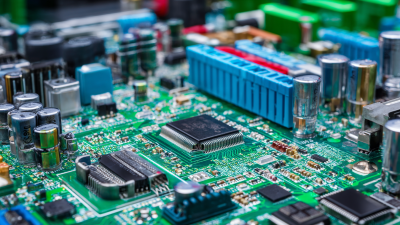
Navigating Import Export Certifications for Best Electronic Board Assembly Suppliers
